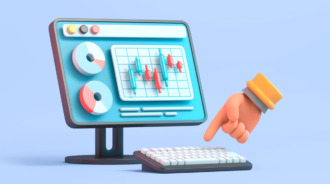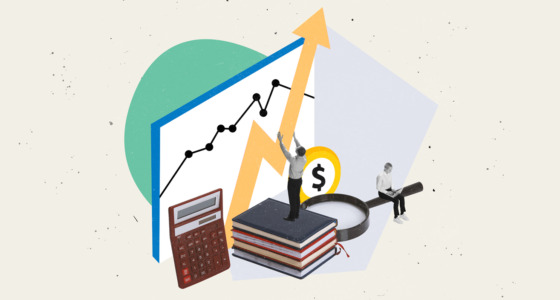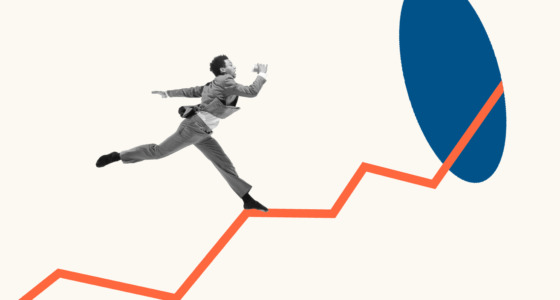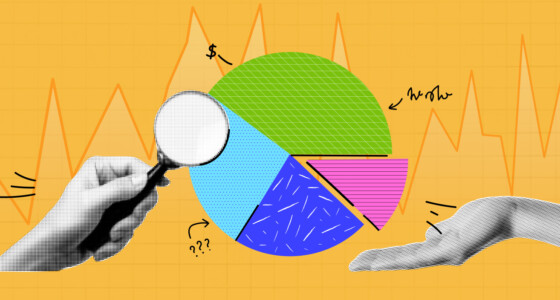

When you’re new to trading, it can seem complicated and overwhelming at first. What’s more, the market is affected by so many different factors that it can be difficult to feel confident that you know what you’re doing.
For example, did you know that even the weather can affect trades? Extreme weather events influence the market, but so do everyday weather patterns like the temperature. These factors affect traders’ moods, which in turn influences how they trade. On sunny days, when they’re in high spirits, traders may be more likely to purchase stocks. Likewise, when the weather is bad, traders may feel less optimistic and more inclined to sell assets.
But the truth is that, with study and practice, trading is simple enough. That’s exactly what this article aims to show. So, if you’re interested in trading on your own, keep reading to find out more!
1. Learn the basics
The first step to trading on your own is to master the basics. You might already know the fundamentals of trading: that it involves purchasing and selling assets to try to benefit from fluctuations in prices. But what more do you need to know to get started?
For one thing, you should familiarize yourself with financial markets—what they are and how they work. Simply put, a financial market is a marketplace where people trade securities, such as:
- Stocks
- Bonds
- Currencies
- Cryptocurrency
- Commodities (raw materials, precious metals, etc.)
Just as with any other marketplace, financial markets work on a principle of demand and supply. Demand is created by investors looking to purchase an asset. Supply is created by dealers who offer an asset. Generally, the more demand there is for an asset, the more the cost will be driven up. When supply increases, the price goes down.
2. Find a reliable broker or a trading platform
The next step is to find a broker. Even though you want to trade on your own, you will need a broker, or else you will not be able to enter the financial market. When searching for a broker, there are some key factors you should consider:
- Full-service vs. Discount brokers: Full-service brokers offer consultancy services, which can be especially useful for investors who are new to trading. On the other hand, discount brokers are usually cheaper, but they don’t offer consulting. However, they may provide educational articles.
- Investment style: The type of broker you choose also depends on what investment style you tend towards. Do you favor a more active style of trading or a slower-paced buy-and-hold style?
- Fees and costs: Make sure you understand the fees involved with hiring a broker. You should be prepared to have to pay a minimum balance, commissions, and perhaps even withdrawal fees.
- Licensing: Lastly, always make sure to check that your broker is fully licensed by whatever legal entities and regulatory authorities are in your country.
When looking for a broker, it’s always worth checking what their clients have to say about them. Look for reviews online to see whether or not a broker is reliable and trustworthy before signing up.
3. Learn technical and fundamental analysis
Technical and fundamental analysis are two different ways of approaching the financial market. Both are used to predict future positions. You must come to understand both of these approaches so that you can forecast future prices.
So, what are the differences between technical and fundamental analysis?
Technical analysis: Traders use technical analysis to analyze statistical trends, i.e., changes in the price. By examining these trends, analysts try to forecast how the asset will behave in the future
Fundamental analysis: Traders who use fundamental analysis look at the economic factors affecting an asset’s value. They try to gauge the inherent worth of assets by evaluating industry conditions, market releases, and recent financial trends.
Both approaches have their merits. The only way to find out which works best for you is to research both thoroughly and practice both methods.

4. Practice with a demo account
Now that you have the basics down, it’s time to practice with a demo account. Demo accounts are computer-simulated trading environments where you can practice using trading software. These accounts allow you to practice trading without actually putting real capital on the line. Use this opportunity to learn and practice a few different strategies.
Three popular trading strategies you can try are:
- Day trading: With this popular style of trading, you purchase and sell assets on the same day. You do not hold any positions overnight. This is a relatively fast style of trading.
- Swing trading: Swing traders are very in tune with technical and fundamental analysis. They use these approaches to swoop in as a trend ends to make the most of the price volatility
- Scalping: Scalping is the fastest method of trading out there. Rather than trying to make big gains, scalpers make loads of small transactions, capitalizing on tiny movements within the market.
5. Get started
Once you’ve done your research and practiced trading using a demo account, you’re finally ready to get started.
One key piece of advice is to start small. You don’t want to risk a lot of capital, especially not at this early stage. Deposit some funds into your account, and from there focus on making small trades. Hone your analytical skills and trading strategy before moving on to trade bigger.
Make sure to keep a cool head when trading, and don’t get swept up in the high emotion of things. You must remain critical and analytical!








